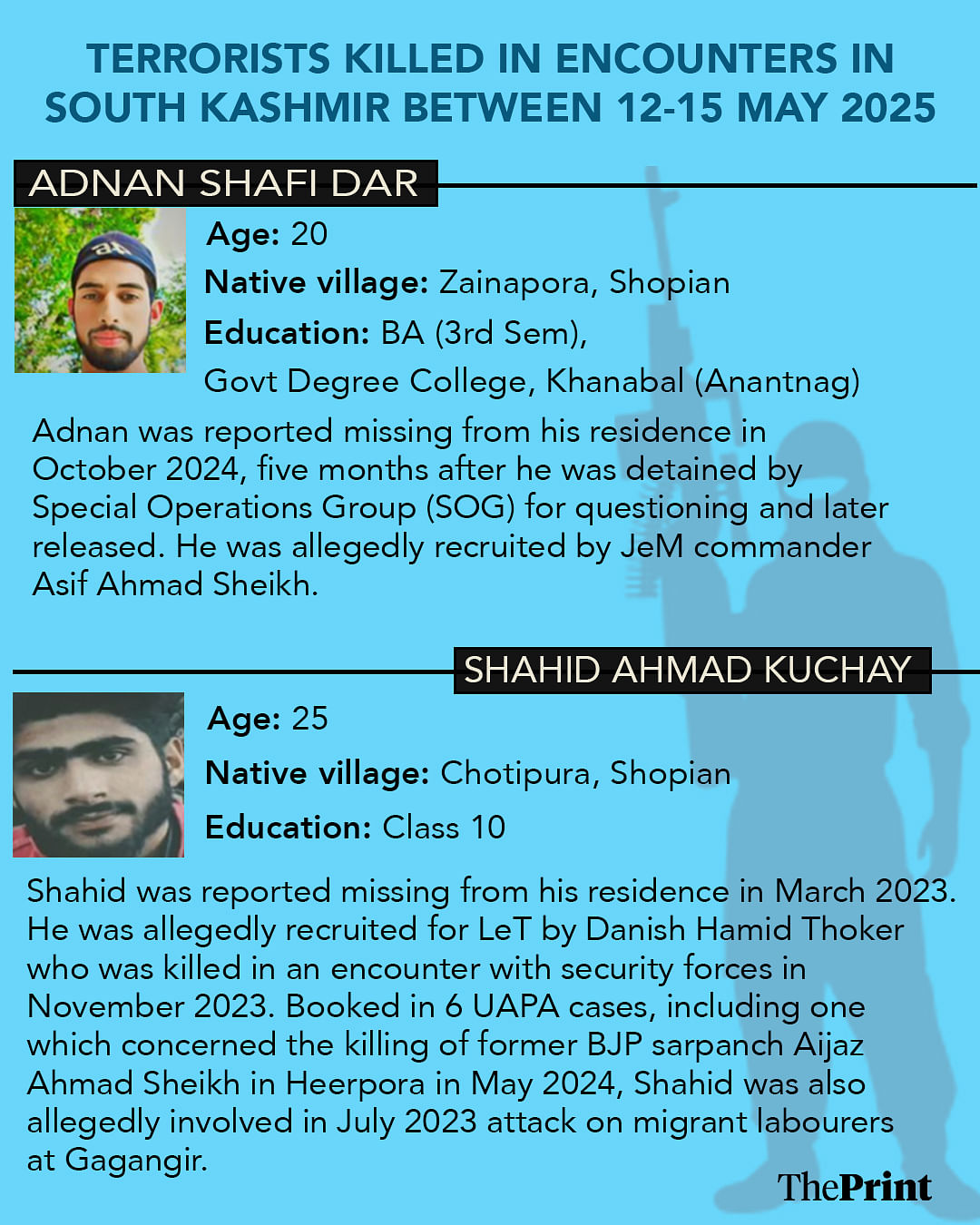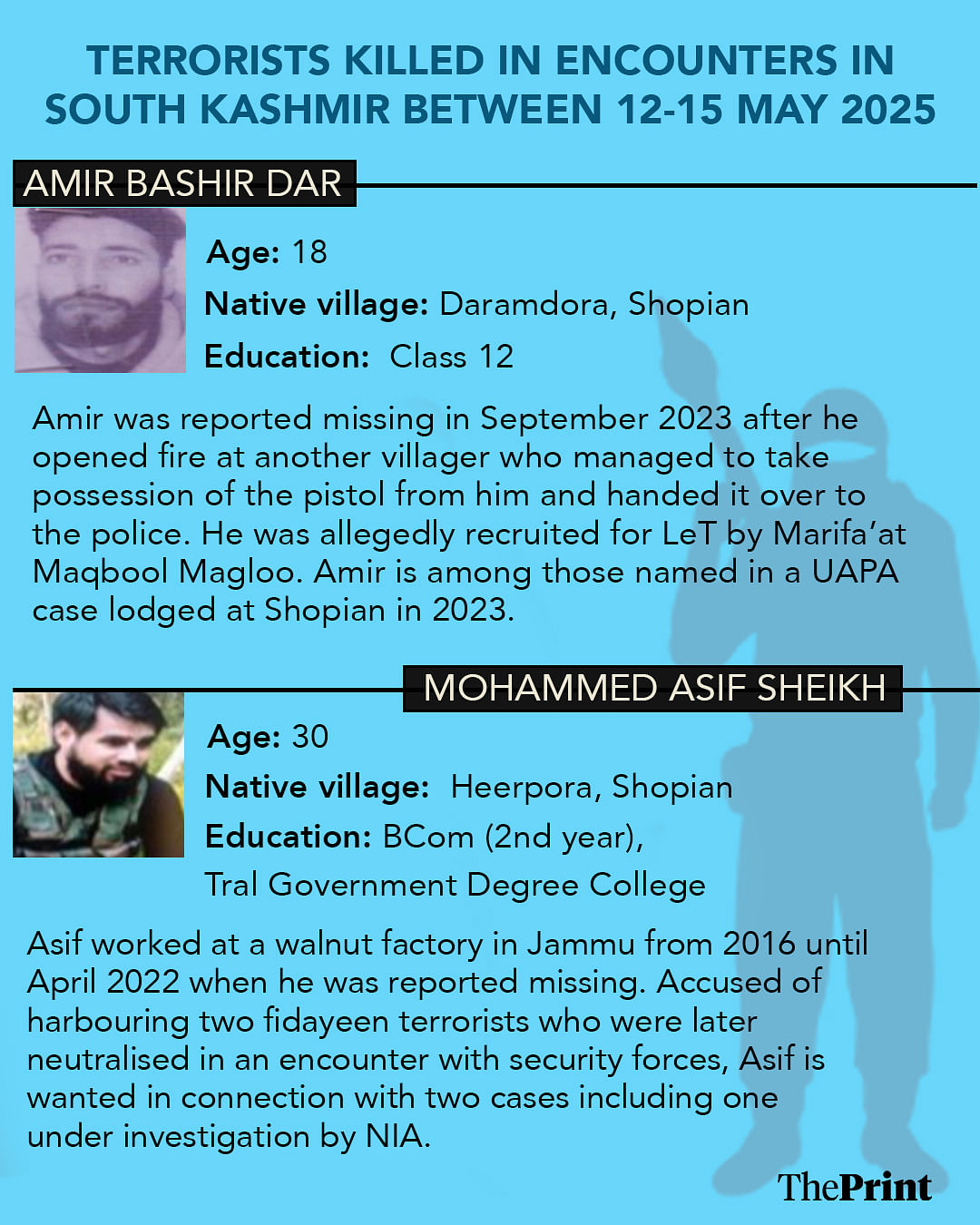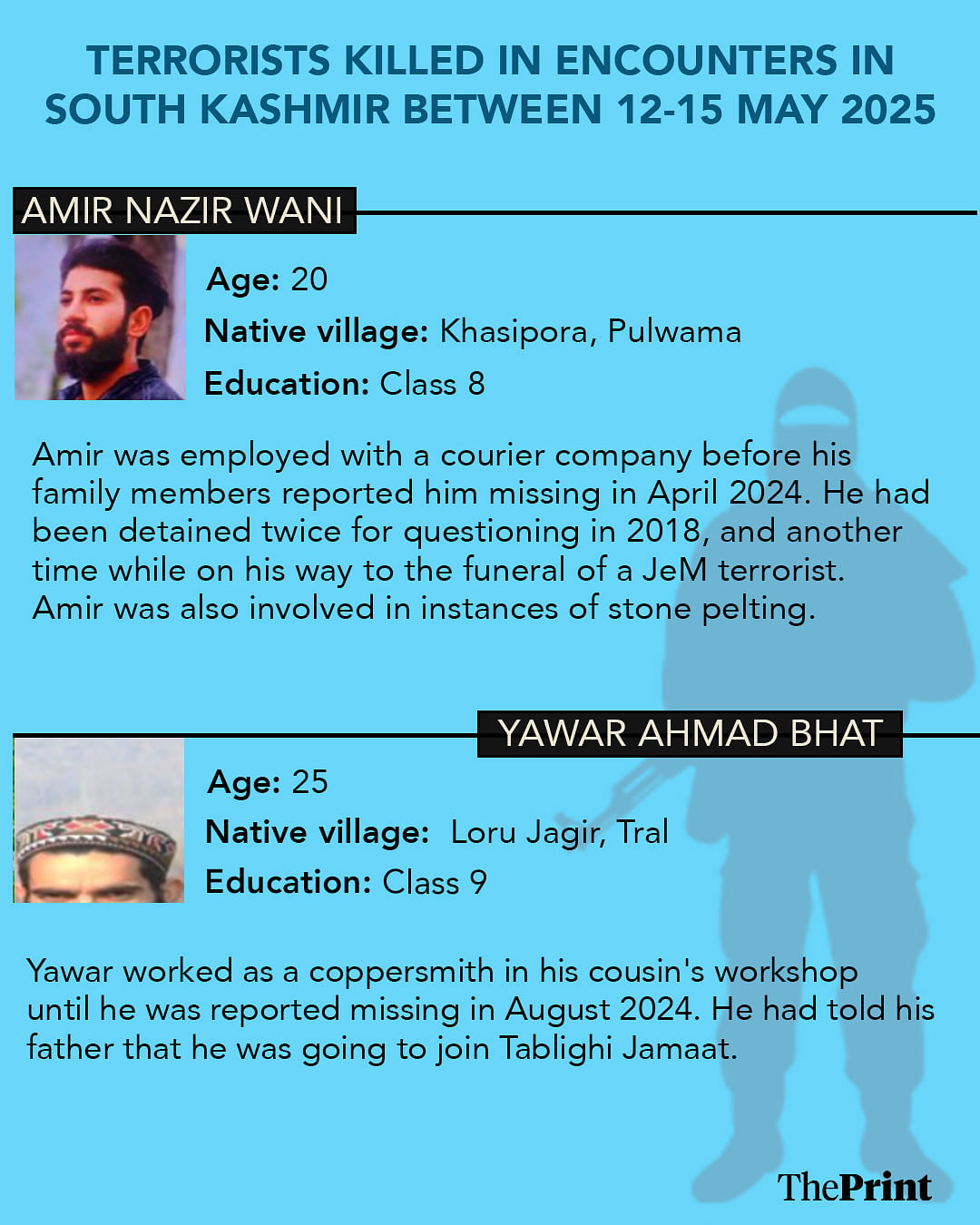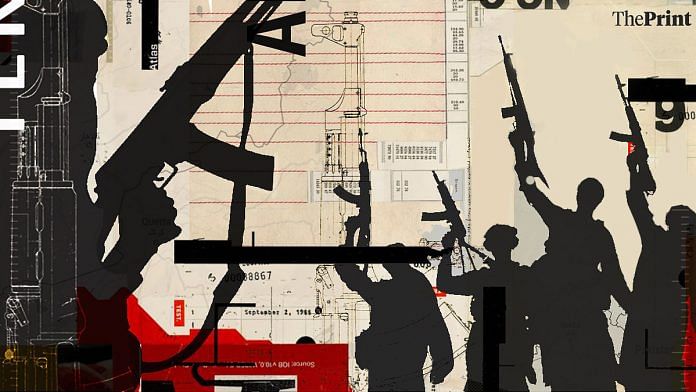New Delhi: For just a few days last summer, Amir Nazir Wani’s family let themselves believe their son was finally headed somewhere. The saffron-and-black logo of XpressBees courier service splashed over the back of his t-shirt, the 20-year-old spent his days navigating the lanes of the southern Kashmir town of Tral, delivering packages and making pick-ups. Educated to just the eighth grade at a local madrasa, Amir had struggled to hold down a job, and repeatedly had run-ins with police.
Then, less than ten days after he began work at XpressBees, Amir vanished. That evening, when Nazir Ahmad Wani came to report his son’s disappearance, a local police officer remembers asking for his phone number. “Amir has gone to seek Paradise,” the father replied, “He doesn’t need a phone anymore.”
Last week, police in Jammu and Kashmir said it had killed six terrorists—three each from Lashkar-e-Taiba (LeT) and Jaish-e-Muhammad (JeM), including Amir—in the mountains above Kellar, in southern Kashmir. These ethnic-Kashmiri units have been critical to supporting the highly-trained Pakistani nationals operating in the high mountains, providing logistical support and intelligence.
The killings of the six make clear that Lieutenant-Governor Manoj Sinha’s claims of zero recruitment into terrorist groups, an assertion often made by highly-placed officials, aren’t backed up by evidence.



Eyewitness testimony suggests at least one such ethnic-Kashmiri cell member guided the terrorists who killed 26 people in Pahalgam, sparking off the 100-hour India-Pakistan aerial and artillery battle, although there is no evidence the six men killed in the encounter were involved.
Amir, intelligence records obtained by ThePrint show, is believed to have formally joined his JeM unit late in April, 2024. Adnan Shafi Dar, dropped out of his undergraduate programme at the Government Degree College in Anantnag last October, and also joined JeM. Mohammed Asif Sheikh, the senior-most member of the cell, left home to join JeM in April, 2022.
Shahid Ahmad Kuchay, a one-time domestic worker, joined LeT in March, 2023. Amir Bashir Dar, who too worked as a domestic worker, left home to join the LeT that September. Former coppersmith Yawar Ahmad Bhat joined LeT the next year, in August.
“There are dozens of other young people we believe live in a kind of grey zone, occasionally collaborating with terrorist groups, until their operations are detected and they are forced to flee home,” a senior police officer told ThePrint on condition of anonymity. “To describe them simply as overground workers, or small cogs in a big machine, is misleading. There are many who are trusted advisers, with a decisive influence on operations.”
Also Read: J&K police, security forces on alert as Pakistan-linked sleeper cells rear head in Kashmir
Kashmir’s prospect-less rebels
Few of Kashmir’s jihadists today come from the ranks of the educated, English-speaking middle-class, which was briefly drawn to the Islamist-led movements of 2008, 2010 and 2016. None of the six was trained at camps across the Line of Control, and received only basic instruction on the use of assault rifles and pistols in the high-altitude forests around the Kashmir valley. Their task was to facilitate attacks—not directly participate as fighters.
Shahid Kuchay dropped out of school after the tenth grade, and showed no interest in further study. Bashir completed his high school studies from the Government Higher Secondary School in Keegam, but could only find employment as a domestic worker.
Adnan, for his part, did join a degree programme, studying for a Bachelor of Arts degree at the Government Degree School in Khanabal. He only completed three semesters, though.
The most educated of the six men killed last week was Asif, who completed high school from the Nur-ul-Huda school in Kuchmulla, and studied for two years in an undergraduate commerce programme at the Government Degree College in Tral. Then, he dropped out of studies to begin work at a walnut-processing factory in Jammu, frequently travelling to Kashmir to purchase raw stocks.
From his home in Jammu, which he shared with his brother Shafiq Ahmad Sheikh, Asif is believed by police to have harboured two Pakistani jihadists who staged an unsuccessful attack on a bus carrying Central Reserve Police Force (CRPF) personnel in Sunjwan.
Each of the six men seemed to have been drawn to the jihad because of deep connections with older role-models. Bashir, for example, is believed to have joined the Lashkar because of his long friendship with Marifa’at Maqbool Magloo, a former resident of Chaigund village who was killed in an encounter in the Keegam area last year.
Like the other men, Bashir had to pass an initiation rite—firing with a pistol at point blank range on local activist Ayaz Ahmad Mir, in September 2023. In this case, Mir seized the weapon from Amir in a struggle, after which the jihadist fled.
Amir, interestingly, was detained by police twice in 2018, for his role in the Islamist-led street protests that swept across southern Kashmir. He spent four weeks in prison. In 2021, he was detained by police in Awantipora while on his way to attend the funeral rites of a slain JeM terrorist from the area, Wakeel Ahmad Shah. Wakeel was, among other things, accused of assassinating local Bharatiya Janata Party leader Rakesh Pandita, as well as the murders of several migrant workers in the area.
For his part, Yawar appears to have made contact with friends close to the Lashkar while attending meetings of the proselytising order, the Tablighi Jamaat. Although the Tablighi Jamaat is a pietist movement, and avoids political contention, its gatherings have often been used by jihadist groups to scout talent.
Kuchay was the most active of the six men, police records state, and was accused of the murder of a BJP worker in Shopian, as well as multiple incidents involving transporting and hiding weapons and terrorists. Kuchay was, notably, alleged to be involved in the massacre of seven workers at a tunnel being built at Gagangir, near Ganderbal in central Kashmir.
“The recruitment is carried out by very tightly knit circles of individuals who have known each other for a long time,” one police officer told ThePrint. “It’s almost like gang membership in urban areas.”
(Edited by Amrtansh Arora)
Also Read: India needs to focus on winning in Kashmir, not fighting Pakistan






